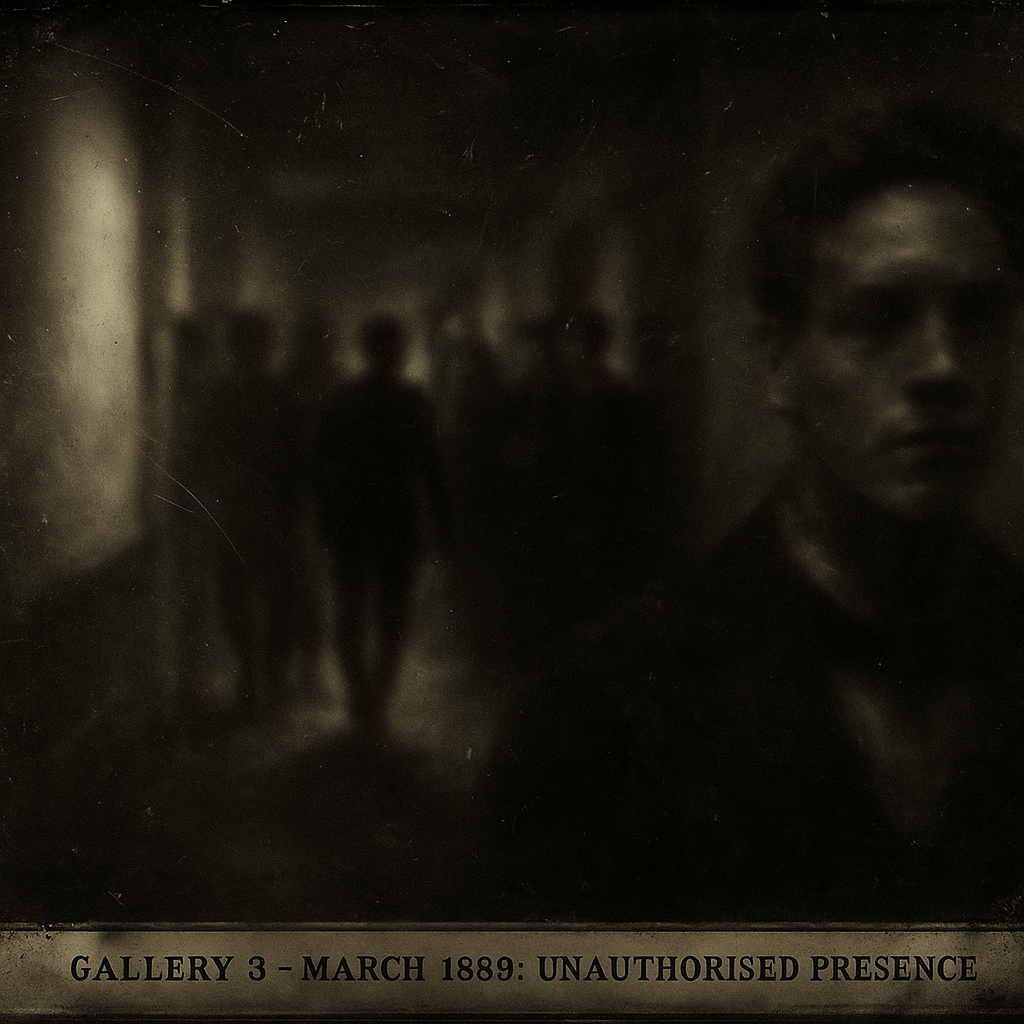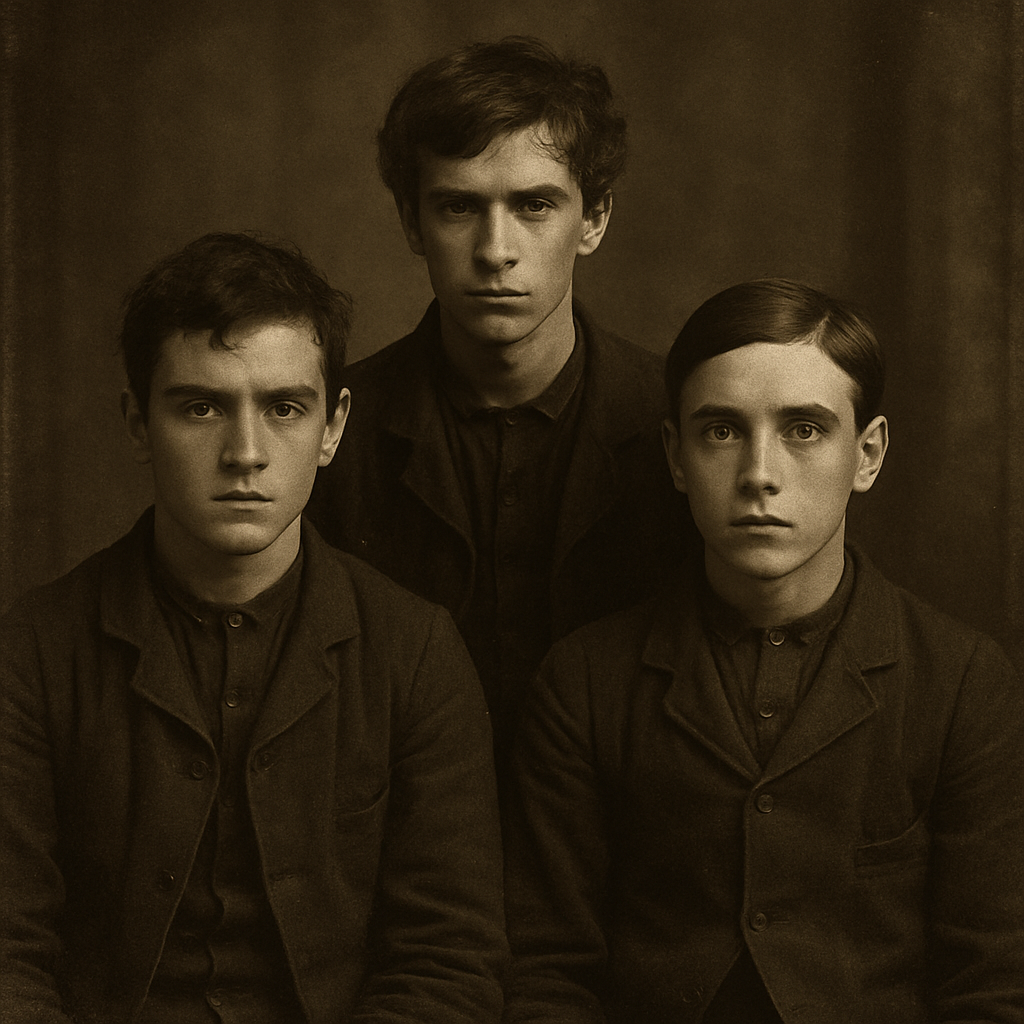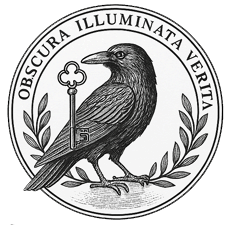StormCroft Internal Dossier
Prepared under Directive Echo-17 | Classification: ELEVATED
Security Notice
CLASSIFIED DOCUMENT – LEVEL V CLEARANCE REQUIRED
This document is part of the STORMCROFT INTERNAL ARCHIVE and is restricted to personnel with designated privileges under Directive Echo-17.
Unauthorised access will trigger observational tracking and acoustic flagging.
DO NOT DISSEMINATE.
Personnel Registry
Dr. Lydia Stormcroft – Founder, Aether Bell Theorist. Born Exeter, Devon – 1 April 1831. Disappeared: 14 May 1901. Level V
Octavius Wren – Architect, Bell Room Designer. Born Totnes, Devon – 18 August 1834. Disappeared: c. 1893. Level V
Dr. Abram Finch – Neuro-researcher, Loop Engineer. Born Bath – 9 March 1839. Died: 21 October 1885. Level IV
Wilber R. Dart – Railway & Temporal Specialist. Born Ivybridge – 12 Dec 1836. Died: 7 June 1882. Level IV
Clara Bevel – Assistant to Wren. Born Bridport – 27 Feb 1846. Disappeared: 18 May 1888. Level III
Elias Dunbridge – Assistant Archivist / Head Archivist. Born 1874. Disappeared: 1911. Level III
Merritt Vale – Clock Technician. Born 1860. Disappeared: 1888. Level II
Elijah & Reuben Morris – Groundskeepers (The Morris Brothers). Born St. Germans – 14 July 1841. Last Seen: 1886. Level II
Jonathan Hales – Kitchen Porter. Born 1870. Disappeared: 1889. Level I
Samuel Rooke – Linen Steward. Born 1868. Status: Unknown. Level I
Thomas Elwick – Grounds Assistant. Born 1871. Last seen: 1888. Level I
Willet Gorse – Under-Gardener. Born 1869. Committed: 1893. Level I
Alton Reys – Laundry Assistant. Born 1873. Disappeared: 1888. Level I
Darby Fitch – Firebox Attendant. Born 1865. Vanished: 1887. Level I
Clifton Shaw – Carriage Keeper. Born 1860. Last letter: 1902. Level I
Rowley Gant – Hall Custodian. Born 1871. Confined: 1893. Level I
Thane Merrow – Bath Steward. Born 1860. Dismissed: 1885. Level I
Edwin – Personal Attendant. Born 1871. Departed: 1890. Sighted: 1892. Level I
Matthew – Undocumented Watcher. Active: 1874–1878 (Unverified). Level Unknown
CroftNet Era: Helen Marridge, Joyce Mallory, Leo Fenner, Isaac Wren. Disappeared 1982–1984. Levels II–V
BLACK ENTRY: Elias Renfield, Patient K, The Visitor, Subject M, Hollow Echo – CLASSIFIED
Loop Entanglement Matrix
- Finch & Reuben Morris – Harmonic sync and emotional tethering
- Wren & Elijah Morris – Mirror resonance and silent coordination
- Bevel & Finch – Calibration, glyph decoding
- Clara & Quiet Loop – First alignment before disappearance
- Edwin & Multiple personnel – Emotional grounding and sensory balancing
- Vale & Gorse – Echo exposure monitoring and clock-breath calibration
Device Archive Summary
- The Aether Bell – Resonates with unrealised frequencies and thought.
- The Quiet Loop – Stores purposeful silence; still active beneath the Bell Room.
- Signal Stone Tablets – Pattern-etched slabs; induce mirrored hallucinations.
- The Morrow Receiver – Dream interpretation device; caused synchronous speech.
- CroftNet Switch – Phantom interface detected post-shutdown.
- Red Cable 14 – Self-healing conduit; pulses without power source.
- Listening Floor – Copper-embedded timber that whispers future statements.
- The Annulet Array – Time distortion via resonance; built by Merritt Vale.
- Croft Loop Dial – Personal time modulation; subject to memory tether failure.
- Room 11-S Regulator – Failed containment device for echo memories.
Black Entry Annex
- Elias Renfield – Vault Engineer (Last confirmed 1931)
- Patient K – Loop Isolation Subject (Disappeared 1946)
- The Visitor – Anomaly observed in 1871, 1924, and 1984
- [REDACTED] Subject M – Etched name found pre-StormCroft era
- [REDACTED] Hollow Echo – Believed projection from unregistered subject
Final Directive
IF FOUND: Return to Archival Unit 7 without breaking seal.
This file responds to its own movement. If this copy was not logged under your credentials, burn immediately and forget page 17.
Echoes resonate longer in minds that question.
StormCroft Internal Dossier
Prepared under Directive Echo-17 | Classification: ELEVATED
Security Notice
CLASSIFIED DOCUMENT – LEVEL V CLEARANCE REQUIRED
This document is part of the STORMCROFT INTERNAL ARCHIVE and is restricted to personnel with designated privileges under Directive Echo-17.
Unauthorised access will trigger observational tracking and acoustic flagging.
DO NOT DISSEMINATE.
Personnel Registry
Threat Analysis Registry – Directive Echo-17
Recognised Security Threats
Benjamin Teal – Telegraph Runner / Temporary Porter. Born 1869. Last logged 1887.
Threat Type: Information Leakage Risk
Removed from post after overhearing a Bell Room entanglement ritual. Repeated phrases during sleep: “The wires told me.” Dispatched. Last seen speaking in rhymed couplets in Tavistock.
Lydia Corven – Short-term Nurse. Last seen 1886.
Threat Type: External Observation Agent
Suspected of copying glyphs onto glove lining. Disappeared following red dust breach in Room 37. Name reappeared in CroftNet logs from 1983.
Thomas Elwick – Grounds Assistant. Internally compromised.
Threat Type: Manipulable Subject
Known to repeat Morris brothers’ words before they were spoken. Described as “echo-bound.”
Dr. Abram Finch – Neuro-researcher. Posthumously designated.
Threat Type: Loop Entrapment Risk
Memory containment experiments compromised perception integrity. Journals remain unreadable by CroftNet AI.
Special Designation: High-Risk Internal Figure
Elijah & Reuben Morris – Groundskeepers.
Threat Type: Emotional Compromise / Community Interference
Formed emotionally intense bonds with staff including Edwin, Elwick, and Rooke. Rumoured liaisons with local farm boys. Unauthorised access to boiler corridors. Disappeared 1886; boots found warm. Whispering persisted for 17 hours afterward.
Threat Registry Addendum – “CLEVELAND FILE”
File Code: E-17/CVSTORM-1889-04
Clearance: LEVEL V | ACCESS RESTRICTED | AUDIT TRAIL ENABLED

Recovered from a warped and partially fused surveillance plate stored in a sealed tin behind the Bell Room alcove, this image captures indistinct, shadowed figures inside the lower east gallery — a restricted section of StormCroft House. Dated March 14, 1889, the photograph aligns with the timeline of the suppressed Cleveland Street breach.
Figures appear blurred or partially erased by overexposure, but archivists have identified four silhouettes, one seated or kneeling (believed to be Edwin), with three standing nearby in non-uniform attire — likely the telegraph boys. A final figure, standing closest to the archway, matches height and posture references for Reuben Morris.
This plate was never logged. A handwritten note on the reverse reads only:
“He wasn’t supposed to be watching.”
Incident Summary:
Covert physical and emotional entanglement discovered between Edwin and Reuben Morris. Edwin compromised by dependency. Reuben orchestrated an unrecorded event with three unidentified telegraph runners linked to the Cleveland Street scandal.
Arrival logged unofficially at 2:43 AM under storm cover. No manifest. Boys smuggled into the East Gallery via Tunnel Access T-North. Loop anomalies and Bell Room destabilisation followed. All documentation of the 12-hour period redacted.
Consequences
- Elijah Morris submitted a sealed letter of complaint against his twin.
- Edwin found in emotional distress; went missing for 39 hours.
- Staff reported scent of salt, ash, and cloves in the gallery.
- Youths returned to London via fog transport. One later found dead in Paddington rail works (unlinked).
Cover-up Measures
- Logged as boiler malfunction and “routine youth trade assessment.”
- March 1889 guest logs destroyed by Finch (recorded posthumously).
Lingering Anomalies
- T-North tunnel emits humming on equinox nights.
- Room 37’s lock reverts spontaneously every March 14 until 1901.
- Edwin’s towel emits faint ticking in water.
“Love opened the gate. Shame shut the record.” – Archivist Code Fragment [REDACTED]
“Where the Fog Hid the Truth – The Cleveland Street Affair and StormCroft’s Shadow”

This sepia-toned, late 19th-century photograph was recovered from the personal archive of former StormCroft Head Archivist Elias Dunbridge. It is believed to depict the three unidentified telegraph runners linked to the suppressed Cleveland Street incident and the StormCroft basement breach of 1889.
Though their names were erased from all records, this image — marked only with the word “Runaways” on the reverse — captures the trio in a moment of uncanny stillness. Slight motion blur at their edges suggests haste, though their eyes meet the camera with calm defiance. The backdrop resembles the mist-laden low edge of Dartmoor, near the original East Tunnel exit.
StormCroft internal memos redacted this image from official logs. The original plate was found buried in soot behind a collapsed storage wall in the disused observatory annexe.
Recovered from an unpublished article draft, ink-smudged and unsigned. Date unknown. Believed written post-1893.
In the summer of 1889, London’s Cleveland Street was ablaze with rumour and revelation. A telegraph boy confessed. Names were whispered. Papers were seized. One house in Fitzrovia was found to be a nexus of elite impropriety and clandestine encounters, its walls echoing with scandal too potent for the public to fully glimpse.
The case sparked outrage in Parliament. Nobility were implicated. But amid all the smoke and outrage, one name — or more precisely, one place — remained absent from every official document: StormCroft House, Dartmoor.
And yet, we now know that at least three of the boys questioned in the original Cleveland proceedings vanished from London within days of the raid. Where did they go?
A sealed memorandum, discovered in 1983 in the broken vent of StormCroft’s collapsed west wing, offers a chilling clue:
“Arrival confirmed. T-North entrance used. No witnesses. Wren authorised fog transport personally. Boys placed in Lower Gallery under Flicker Room.”
– Extract from Internal Movement Log #C5/881 (Redacted)
Why Were They Sent to Dartmoor?
StormCroft House was no ordinary institution. By 1889, its founders had already sealed portions of the estate for “temporal instability.” Researchers like Dr. Finch and Dart were working not just with physics, but with emotion — resonance, memory, and consciousness as fields to be studied and manipulated.
These boys, unnamed in all official records, were never guests. They were tools — instruments to test something StormCroft called “emotive transference under duress.” Witness accounts from surviving staff mention rooms filled with whispering cables and flickering lanterns that grew brighter when touched by grief.
Edwin, the house’s young steward of “intimate services,” is believed to have been involved in these sessions. His handwritten note, hidden in a book of nursery rhymes, reads only:
“They were kind. And frightened. And humming.”
How StormCroft Escaped Exposure
Despite the weight of public scandal hanging over London, StormCroft escaped untouched. The reason? Location, and classification.
-
Location: The boys were moved under fog and silence to a manor shrouded in isolation — built of moorstone and memory, unreachable by rail without specific instruction.
-
Classification: StormCroft was not listed as a residence. It was a private research compound under the protection of multiple unnamed patrons, some of whom had influence within the Postmaster General’s Office, the Home Office, and early psychic warfare divisions.
A document titled “Event Deflection Strategy: CV-Silence” was drafted just days after the scandal broke. It contains the following directive:
“Cleveland cannot reach the moor. If the wind rises, close the tunnels. If the bells ring, deny they exist.”
Aftermath and Amnesia
The three boys were returned to London after “the fog cleared.” None were seen again. One is believed to have perished in a rail works accident. The others were erased from every record.
StormCroft House continued its experiments for nearly four more decades before closing its doors to light. But if you visit the eastern gallery — what’s left of it — and stand still, you may still hear humming.
And if you do, ask yourself:
What else was buried in the fog? And who decided we should forget?
